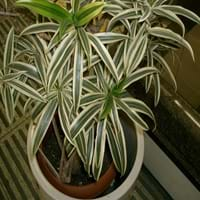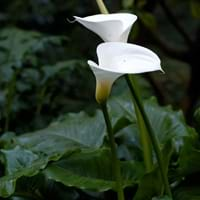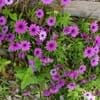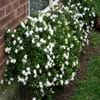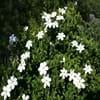Life Span
Perennial
Perennial
Type
Broadleaf Evergreen
Bulb, Flowering Plants
Origin
Madagascar
South Africa, Swaziland
Types
Not Available
Passionfruit, Fire glow, Gem rose, Blaze, Crystal blush
Number of Varieties
Not Available
Habitat
Tropical Indian Ocean Islands
Swamps
USDA Hardiness Zone
10-15
8-10
Sunset Zone
21,22
2a, 2b, 5, 6, 8, 9, 12, 13, 14, 15, 16, 17, 18, 19, 20, 21, 22, 23, 24
Habit
Upright/Erect
Clump-Forming
Minimum Height
Not Available
Minimum Width
Not Available
Flower Color
White, Green
Blue, Dark Purple, Light Purple, Red, White
Flower Color Modifier
Bicolor
Bicolor
Fruit Color
Not Available
Not Available
Leaf Color in Spring
Green, Dark Green
Dark Green
Leaf Color in Summer
Green, Dark Green
Green, Dark Green
Leaf Color in Fall
Green, Dark Green
Green, Dark Green
Leaf Color in Winter
Green, Dark Green
Green, Dark Green
Leaf Shape
Lanceolate
Arrowhead
Plant Season
Spring, Summer, Fall, Winter
Autumn, Spring, Summer
Sunlight
Partial Sun, Partial shade
Full Sun, Part sun, Partial shade
Growth Rate
Not Available
Medium
Type of Soil
Loam, Sand
Clay, Loamy
The pH of Soil
Acidic, Neutral
Neutral, Slightly Acidic
Soil Drainage
Well drained
Average
Bloom Time
Indeterminate
Spring, Summer
Tolerances
Not Available
Wet Site
Where to Plant?
Container, Ground, Pot
Container, Pot
How to Plant?
stem tip cuttings
From bulbs, From Rhizomes, Seedlings, Transplanting
Plant Maintenance
Medium
Medium
Watering Requirements
Average Water Needs, Do Not over Water
Over-watering can cause leaf problems or root diseases, Requires a lot of watering
In Summer
Lots of watering
Lots of watering
In Spring
Moderate
Moderate
In Winter
Average Water
Average Water
Soil pH
Acidic, Neutral
Neutral, Slightly Acidic
Soil Type
Loam, Sand
Clay, Loamy
Soil Drainage Capacity
Well drained
Average
Sun Exposure
Partial Sun, Partial shade
Full Sun, Part sun, Partial shade
Pruning
Remove damaged leaves
Prune to stimulate growth, Remove dead or diseased plant parts, Remove deadheads
Fertilizers
10-10-10 diluted liquid fertilizer
All-Purpose Liquid Fertilizer
Pests and Diseases
Flecking, Fluoride toxicity, Fusarium leaf spot
Armillaria mellea, Gray mold, Leaf spot, Powdery mildew, Pythium rot, Rhizoctonia crown rot, Root rot, Thripes
Plant Tolerance
Drought
Drought
Flowers
Insignificant
Yes
Flower Petal Number
Single
Single
Foliage Texture
Medium
Coarse
Foliage Sheen
Glossy
Glossy
Attracts
Bugs, Mealybugs, Spider Mites
Not Available
Allergy
no allergic reactions
Diarrhea, Intestinal gas, Vomiting
Aesthetic Uses
Beautification
Beautification, Bouquets
Beauty Benefits
Not Available
Not Available
Environmental Uses
Air purification
Air purification
Medicinal Uses
Antipyretic, Diarrhea, Dysentry, Dysmenorrhea, Hemostatic, Malaria
Not Available
Part of Plant Used
Bark, Leaves
Flowers
Other Uses
Used to make herbal teas
Showy Purposes
Used As Indoor Plant
Yes
No
Used As Outdoor Plant
Yes
Yes
Garden Design
Container, Feature Plant, Houseplant, Screening, Wind Break, Tropical
Not Available
Botanical Name
DRACAENA reflexa
Zantedeschia Aethiopica
Common Name
Pleomele, Song-of-India
Calla Lily
In Hindi
Song-of-India
Calla Lily
In German
Song-of-India
Calla-Lilien-
In French
Song- of- Inde
Lys calla
In Spanish
Song- de - la India
Cala
In Greek
Τραγούδι - του -Ινδίας
Calla κρίνος
In Portuguese
Canção -da-Índia
Calla
In Polish
Song- of- Indie
Calla Lily
In Latin
Song of India :
Calla Lilium
Phylum
Magnoliophyta
Magnoliophyta
Class
Lilopsida
Liliopsida
Order
Liliales
Alismatales
Genus
Dracaena
Zantedeschia
Clade
Angiosperms, Monocots
Angiosperms, Monocots
Tribe
Not Available
Zantedeschieae
Subfamily
Nolinoideae
Aroideae
Number of Species
Not Available
Difference Between Song-of-India and Calla Lily
If you are confused whether Song-of-India or Calla Lily are same, here are some features about those plants to help you choose better. Many people think that these two plants have the same characteristics, but one can see Song-of-India and Calla Lily Information and learn more about it. Fertilizers required for proper growth of Song-of-India are 10-10-10 diluted liquid fertilizer, whereas for Calla Lily fertilizers required are All-Purpose Liquid Fertilizer. Hence, one should know the basic difference between Song-of-India and Calla Lily if you are planning to have them in your garden to enhance its beauty.
<
Flowering PlantsImportance of Song-of-India and Calla Lily
Want to have the most appropriate plant for your garden? You might want to know the importance of Song-of-India and Calla Lily. Basically, these two plants vary in many aspects. Compare Song-of-India and Calla Lily as they differ in many characteristics such as their life, care, benefits, facts, etc. Every gardener must at least have the slightest clue about the plants he wants to plant in his garden. Compare their benefits, which differ in many ways like facts and uses. The medicinal use of Song-of-India is Antipyretic, Diarrhea, Dysentry, Dysmenorrhea, Hemostatic and Malaria whereas of Calla Lily is Not Available. Song-of-India has beauty benefits as follows: Not Available while Calla Lily has beauty benefits as follows: Not Available.
Compare Facts of Song-of-India vs Calla Lily
How to choose the best garden plant for your garden depending upon its facts? Here garden plant comparison will help you to solve this query. Compare the facts of Song-of-India vs Calla Lily and know which one to choose. As garden plants have benefits and other uses, allergy is also a major drawback of plants for some people. Allergic reactions of Song-of-India are no allergic reactions whereas of Calla Lily have Diarrhea, Intestinal gas and Vomiting respectively. Having a fruit bearing plant in your garden can be a plus point of your garden. Song-of-India has no showy fruits and Calla Lily has no showy fruits. Also Song-of-India is not flowering and Calla Lily is flowering. You can compare Song-of-India and Calla Lily facts and facts of other plants too.
